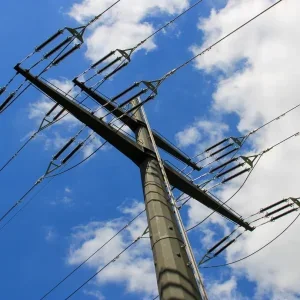
The energy industry, a critical backbone of modern society, faces unprecedented threats from cyber insecurity. As the sector increasingly integrates digital technologies to optimise operations and enhance efficiency, it simultaneously becomes a prime target for cyberattacks. This article explores the landscape of cyber threats in the energy industry, the implications of these threats, and the strategies companies can employ to fortify their defences.
The Rising Tide of Cyber Threats in Energy
Cybersecurity has become a pressing issue for the energy sector, which includes oil and gas, electricity, and renewable energy sources. The digital transformation of these industries, while offering substantial benefits, also exposes them to significant risks.
1. Increasing Cyberattacks on Critical Infrastructure
Energy companies manage critical infrastructure essential for the functioning of modern society. As these systems become more interconnected through the Industrial Internet of Things (IIoT), they present attractive targets for cybercriminals. In recent years, there has been a notable increase in the frequency and sophistication of cyberattacks on energy infrastructure.
According to the World Economic Forum, the energy sector is one of the top three most-targeted industries for cyberattacks. High-profile incidents, such as the ransomware attack on Colonial Pipeline in the United States, have highlighted the potential for cyber threats to disrupt supply chains, cause economic losses, and pose risks to national security.
2. Evolving Threat Landscape
The threat landscape is continuously evolving, with adversaries employing advanced tactics to breach security defences. Nation-state actors, organised crime groups, and hacktivists are among the entities targeting the energy sector. These attackers often use sophisticated techniques such as spear-phishing, malware, ransomware, and zero-day exploits to infiltrate systems.
Moreover, the growing use of smart grids, connected devices, and remote monitoring systems introduces additional vulnerabilities. These technologies, while enhancing operational efficiency, also create multiple entry points for attackers.
Implications of Cyber Insecurity in the Energy Sector
The implications of cyber insecurity in the energy industry are far-reaching, affecting not only the companies involved but also the broader economy and society at large.
1. Operational Disruptions
Cyberattacks can lead to significant operational disruptions. For instance, an attack on a power grid can cause widespread blackouts, affecting millions of people and businesses. In the oil and gas sector, cyber incidents can disrupt production, refining, and distribution processes, leading to supply shortages and price volatility.
2. Financial Losses
The financial impact of cyberattacks on energy companies can be substantial. Costs associated with incident response, system restoration, and compensation for affected customers can run into millions of dollars. Additionally, companies may face regulatory fines and legal liabilities if they fail to protect sensitive data or comply with cybersecurity standards.
3. Reputational Damage
Reputation is a critical asset for energy companies. Cyber incidents can damage a company’s reputation, eroding customer trust and investor confidence. Reputational damage can have long-term effects, including loss of market share and difficulties in securing investment.
4. National Security Risks
The energy sector’s role in national infrastructure makes it a target for state-sponsored attacks. Disruptions to energy supply can have cascading effects on other critical sectors such as healthcare, transportation, and finance. Ensuring the security of energy infrastructure is thus a matter of national security.
Strategies for Enhancing Cybersecurity in the Energy Sector
To combat the growing threat of cyber insecurity, energy companies must adopt robust cybersecurity strategies. These strategies should encompass technological, organisational, and regulatory measures.
1. Implementing Advanced Cybersecurity Technologies
Investing in advanced cybersecurity technologies is crucial for protecting against sophisticated cyber threats. Key technologies include:
- Intrusion Detection and Prevention Systems (IDPS): These systems monitor network traffic for suspicious activity and can block potential threats in real time.
- Security Information and Event Management (SIEM): SIEM solutions aggregate and analyse data from various sources to detect anomalies and potential security incidents.
- Endpoint Detection and Response (EDR): EDR tools provide continuous monitoring and analysis of endpoints to detect and respond to threats.
- Encryption: Encrypting data, both in transit and at rest, ensures that sensitive information remains secure even if it is intercepted by attackers.
2. Enhancing Employee Awareness and Training
Human error is a significant factor in many cyber incidents. Energy companies must invest in comprehensive training programmes to educate employees about cybersecurity best practices. This includes recognising phishing attempts, using strong passwords, and following secure data handling procedures.
Regular drills and simulations can also help prepare employees to respond effectively to cyber incidents. Creating a culture of cybersecurity awareness within the organisation is essential for mitigating risks.
3. Adopting a Multi-Layered Defence Approach
A multi-layered defence strategy, also known as defence in depth, involves implementing multiple layers of security controls to protect against threats. This approach ensures that if one layer is breached, additional layers provide continued protection.
Key components of a multi-layered defence strategy include:
- Network Segmentation: Dividing the network into segments limits the lateral movement of attackers within the system.
- Access Controls: Implementing strict access controls ensures that only authorised personnel can access sensitive systems and data.
- Regular Patch Management: Keeping software and systems up to date with the latest security patches helps protect against known vulnerabilities.
- Incident Response Plans: Developing and regularly updating incident response plans ensures that organisations can quickly and effectively respond to cyber incidents.
4. Collaborating with Industry and Government
Collaboration between industry and government is critical for enhancing cybersecurity in the energy sector. Sharing threat intelligence, best practices, and lessons learned can help organisations stay ahead of emerging threats.
Industry associations, such as the European Network for Cyber Security (ENCS) and the North American Electric Reliability Corporation (NERC), provide valuable resources and frameworks for improving cybersecurity. Government agencies also play a key role in setting regulatory standards and providing support during cyber incidents.
5. Conducting Regular Risk Assessments
Regular risk assessments are essential for identifying and mitigating vulnerabilities in energy infrastructure. These assessments should evaluate both technical and organisational aspects of cybersecurity.
Key steps in the risk assessment process include:
- Identifying Assets: Determining which systems, data, and processes are critical to operations.
- Assessing Threats: Identifying potential threats and their likelihood of occurrence.
- Evaluating Vulnerabilities: Assessing the weaknesses that could be exploited by threats.
- Determining Impact: Evaluating the potential impact of a cyber incident on operations and business objectives.
- Implementing Controls: Developing and implementing controls to mitigate identified risks.
6. Adhering to Regulatory Standards
Compliance with regulatory standards is essential for maintaining cybersecurity in the energy sector. Various regulations and frameworks provide guidelines for protecting critical infrastructure.
In the European Union, the Network and Information Systems (NIS) Directive sets out measures for ensuring the security of network and information systems. In the United States, the NERC Critical Infrastructure Protection (CIP) standards provide a comprehensive framework for securing the bulk power system.
Adhering to these standards not only helps organisations protect their systems but also demonstrates their commitment to cybersecurity to regulators, customers, and stakeholders.
Conclusion
The energy industry is at a critical juncture where the benefits of digital transformation must be balanced with the need for robust cybersecurity. As cyber threats continue to evolve, energy companies must adopt a proactive and comprehensive approach to safeguarding their infrastructure.
By implementing advanced technologies, enhancing employee awareness, adopting multi-layered defences, collaborating with industry and government, conducting regular risk assessments, and adhering to regulatory standards, the energy sector can mitigate the risks of cyber insecurity. Ensuring the resilience of energy infrastructure is not only essential for business continuity but also for national security and the well-being of society.
In an era where cyber threats are a constant reality, the energy industry’s commitment to cybersecurity will determine its ability to thrive in a digital world. The stakes are high, but with the right strategies and a concerted effort, the industry can build a robust defence against the ever-present threat of cyber insecurity.






